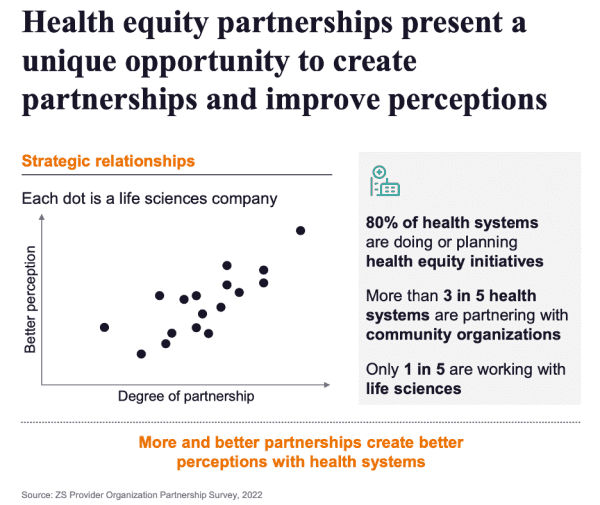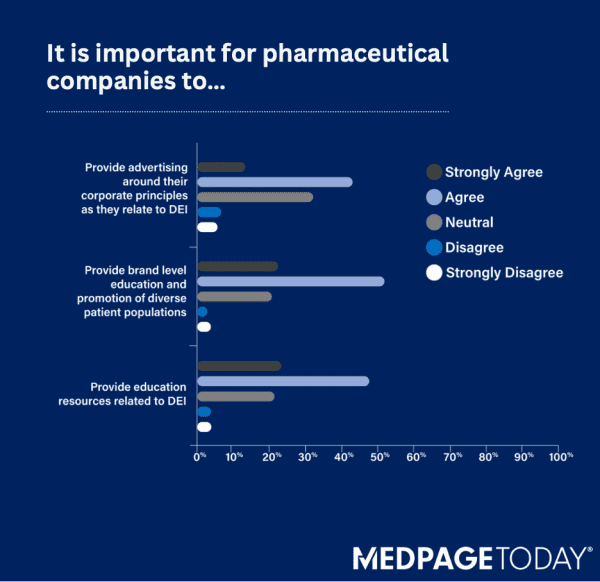Article
SDOH and The Role of Digital - Key Takeaways from the DHC Summit
May 2023
Non-clinical barriers represent an opportunity to increase drug treatment rates by ~10% and branded treatment rates by ~5%. This latest patient data from ZS Associates succinctly demonstrates why the May DHC Virtual Summit focused on Social Determinants of Health. Members of the DHC Expert Network have told us recently that understanding and addressing SDOH is rapidly rising as a top priority for those in commercial roles. With table stakes such as the possibility of increasing the number of patients on therapy by 50+%, it’s become mission critical on an organizational level for pharmaceutical companies to take an active role in solving for these gaps.
Of course, there’s a virtually universal agreement around the responsibility to do our part as an industry. Those of us who have worked in pharma for any length of time can tell you that it’s the personal commitment to improving patient health outcomes that keeps us in the job. The desire to do “good” and make a difference in the lives of individuals who are facing non-clinical/non-biological barriers to treatment is the shared thread for marketers who have long-kept SDOH on the agenda.
LET’S DEFINE IT: Simply put, “SDOH” is any non-clinical, non-biological barriers to treatment. The World Health Organization has a more technical definition: “The conditions in which people are born, grow, work, live and age, and the wider set of forces and systems shaping the conditions of daily life”.
On May 24, DHCG Executive Director, Christine Franklin, was joined by Merck’s Heath Morlok as session co-moderator. Those who attended live were able to ask questions, interact with speakers, and hear moderator analysis and key-takeaways. This summary covers a few of the highlights, and videos from the sessions are available now. We encourage you to go back and watch them if you missed the live sessions, or want to be inspired once again.
Engaging With the Patient Journey
From the presentation by Nan Gu, Associate Principal, ZS Associates
- Pharma has the ability to tangibly engage with (and repair) the patient journey. In the short term, this includes health equity efforts such as trials, grants, partnerships, and patient support activities that can increase the patient pool. The longer term results open up possibilities of successfully meeting clinical trial diversity requirements, ensuring efficacy across patient populations and expanding trust

- The path forward is paved in data. Use data analytics to segment and better understand the disparities driving by SDOH. Healthcare data inputs should be combined with consumer data and integrated at patient and geographic levels. These lens can include debiasing the data, using attributing algorithms, and removing clinical drivers. The resulting insights will allow decision makers to segment identified problems and craft executable plans.
Barrier Breaking Solutions
FROM A CASE STUDY BY: Jamil Rivers, Founder, The Chrysalis Initiative / Barry Vucsko, SVP, Client Partner, EVERSANA INTOUCH / Nicole McCann-Davis, Director, Strategic Planning, EVERSANA INTOUCH
- Unconscious Physician Bias. This inspiring case study demonstrates the need for every facet of the industry to take an active role in addressing SDOH. In the US, black women are 42% more likely to die from breast cancer, even when income and access to care are the same. One key attributing factor identified was unconscious physician bias.
- Digital Tools (and Digital Marketers) Can Make a Measurable Difference. Driven to self-advocate, Chrysalis Initiative founder Jamil Rivers set out to solve the problem. Patient education through a viral campaign created by EVERSANA, and joined by health systems/hospitals and sponsored by pharma and other stakeholders, has already made a significant difference. Since the launch, the breast cancer space has seen a 50% rise in clinical trial enrollment by black women, 93% of users reported an improved standard of care, and over 50% received a second opinion.

Educating Physicians – How Pharma Can Impact Unconscious Bias
FROM the presentation by: Simone Whale, Director, MedPage Today / Rachel Warren, SVP of Editorial, MedPage Today
- Physicians are interested in being educated around SDOH. Almost 50% of HCPs report “sometimes” seeking DEI health-related education and news content, with an additional 23% saying “often” and 15% saying “very often”. While this is good news, it’s important for marketers not to take a passive stance in response. Given the unconscious nature of the problem, content needs to be created and actively served up to physicians. What are they looking for? The MedPage data (335 HCPS surveyed) indicates HCPs are hoping to better understand patient perspectives and improve patient health outcomes.
- Content needs to be delivered where the eyeballs are. Currently, HCPs are rating medical websites and peers as their most trusted sources for health equity content. Pharma websites currently come in last, but there is an expectation among HCPs surveyed that pharma companies “provide brand level education and promotion of diverse patient populations” and “provide education resources related to DEI”.

closing thoughts
A closing panel of pharmaceutical stakeholders provided a valuable roadmap for the path forward.
- Make health equity a priority at the corporate level. Addressing SDOH should be a goal embedded into all of the levels of decision making, not only within pharma but across the health landscape. This looks like starting with intent in mind – from the beginning the patient should be at the core of the design plan.
- Don’t treat SDOH as a philanthropy. Even though it is the right thing to do, it is also an investment. Solving these problems for patients means improving outcomes, adherence, brand treatment, access and can ultimately unlock up to a 50% growth opportunity. Approach it as an absolute must for any business with a bottom line.
- Keep the lens of the patient first. Actively consider the journey of the patient. Recognize that the HCP unconscious bias exists and impacts the patient experience. Use data analytics to segment the identified challenges and then activate plans that provide the content and education to help solve.
Haven’t watched the full session yet? Click here to watch the videos and view the slides now.
About the Author
Christine Franklin
Christine Franklin is the Executive Director of the DHC Group. You can learn more about her on Linkedin.
